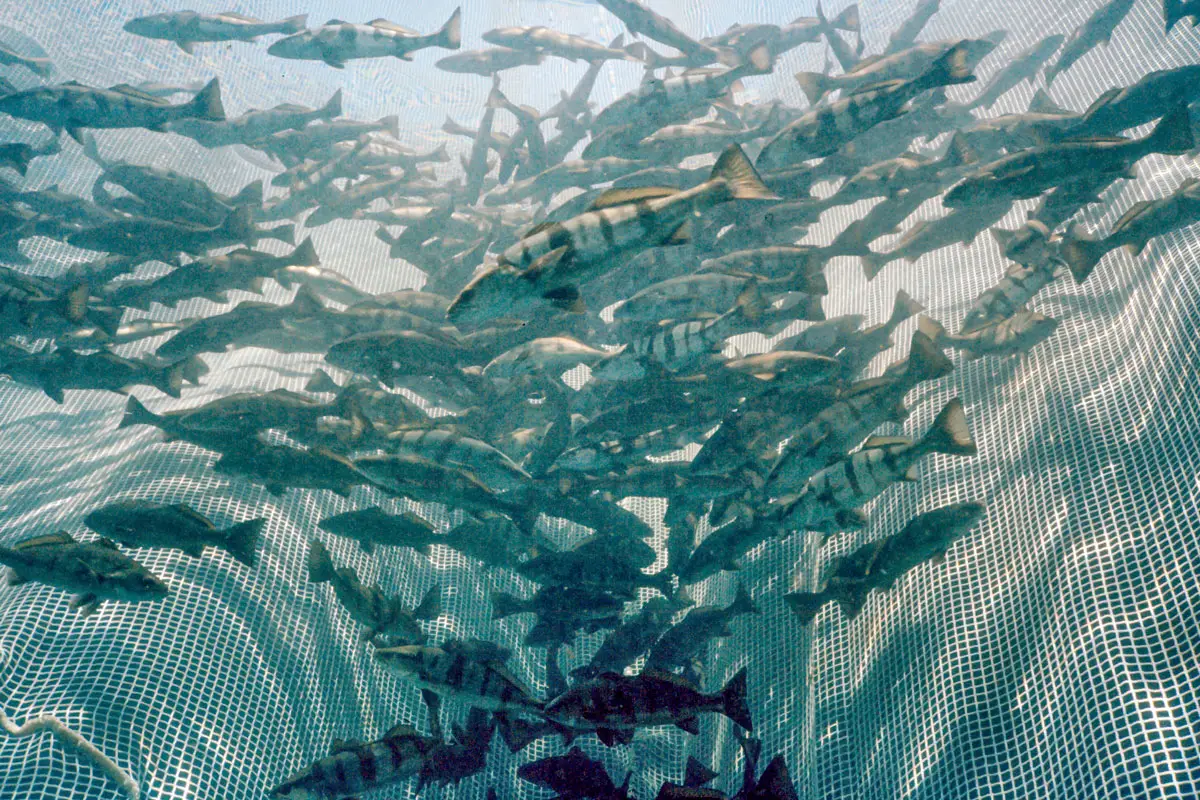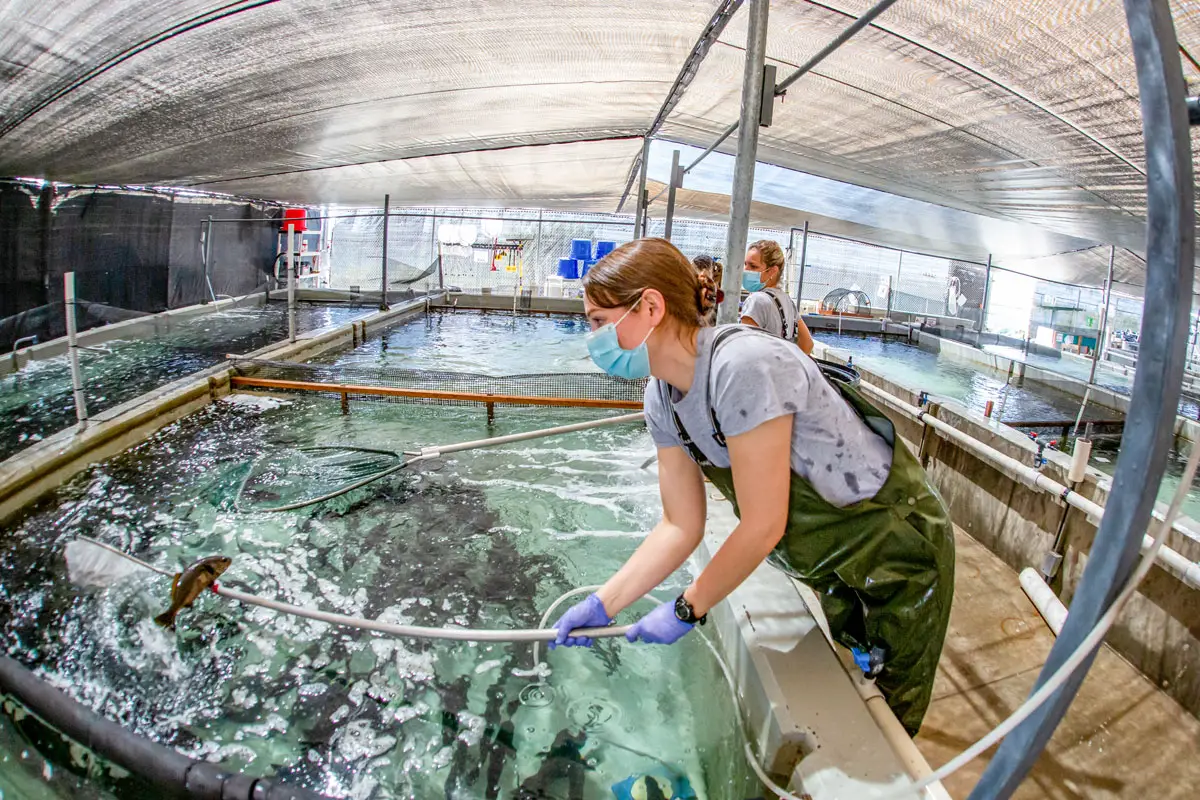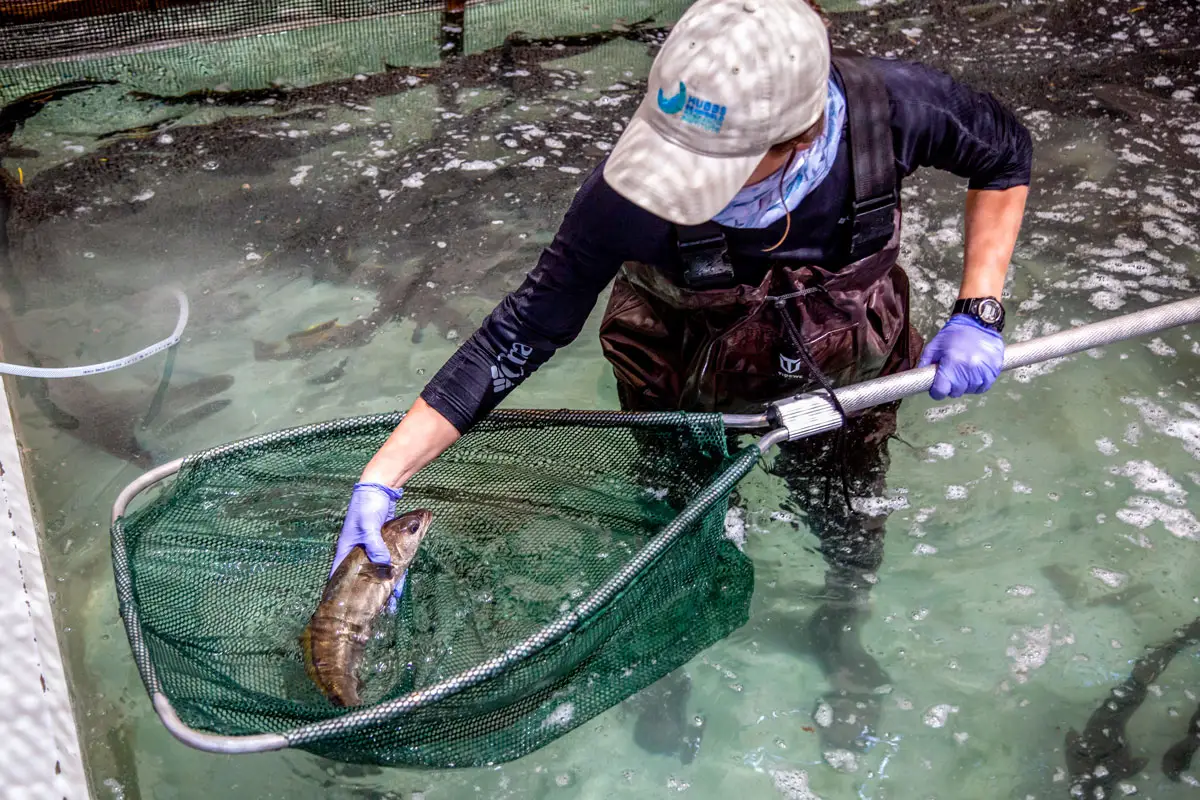CARLSBAD — More than 6,600 juvenile and adult white seabass are being transferred this week from a Carlsbad hatchery to a grow-out facility on Catalina Island as part of a state-run program to replenish the dwindling species due to overfishing.
The fish were trucked on Feb. 8 from the Leon Raymond Hubbard Jr. Marine Fish Hatchery to a boat in Oceanside Harbor and then to the Hubbs-SeaWorld Research Institute’s grow-out facility in Catalina Harbor, where the juvenile seabass will be raised to a size of roughly 14 inches and released into the wild.
The hatchery will return from Catalina on Feb. 10 with 26 adult seabass, which will be quarantined for three to four months before being introduced into breeding tanks to increase the genetic diversity of the broodstock.
The 22,000-square-foot aquaculture facility and hatchery currently holds approximately 40,000 fish, with 20,000 located in pens in Agua Hedonia Lagoon.

Michael Shane, director of replenishment operations at Hubbs, oversees the Carlsbad facility, which has released between 80,000 and 100,000 white seabass into the ocean every year since 1995.
“It’s obviously important because the species has been overfished and lost its habitat,” Shane told The Coast News. “It’s a tasty, popular fish so we are trying to rebuild the stock.”
Hubbs-SeaWorld, a San Diego-based nonprofit marine science organization, has been stocking cultured white seabass back into the ocean for more than 30 years. Since 1983, Hubbs-SeaWorld has led the California Department of Fish and Wildlife’s Ocean Resources Enhancement and Hatchery Program, tagging and releasing 2.6 million of these California croakers back into the ocean.
In 1982, former Assemblyman Larry Stirling’s (R-San Diego) legislation helped launch the initiative, which initially focused on both California halibut and white seabass but shifted to just seabass due to its popularity and value to both recreational and commercial fisheries.
The program, the only one of its kind on the West Coast, is funded by proceeds from ocean enhancement validations for sport and commercial fishing licenses.

“The (Ocean Resources Enhancement and Hatchery Program) is one of the few stocking programs that assess the biological and economic impacts of its releases and the only program of its kind on the west coast of North America,” said Mark Drawbridge, a senior research scientist at Hubbs-Seaworld. “Its main focus is to improve survival rates so that more tagged fish enter the fishery. Some release areas have been better than others and larger fish survive better.”
The Coastal Conservation Association of California also plays a role in the program’s success by offering volunteer support to operate numerous Southern California grow-out facilities, as well as to help catch adult broodstock.
The organization was created by recreational anglers and outdoor enthusiasts to help the “conservation and enhancement of our marine resources and coastal environments,” according to a statement.
Additionally, the Catalina Seabass Fund has supported the development and operation of grow-out facilities in Catalina Harbor for nearly three decades.





